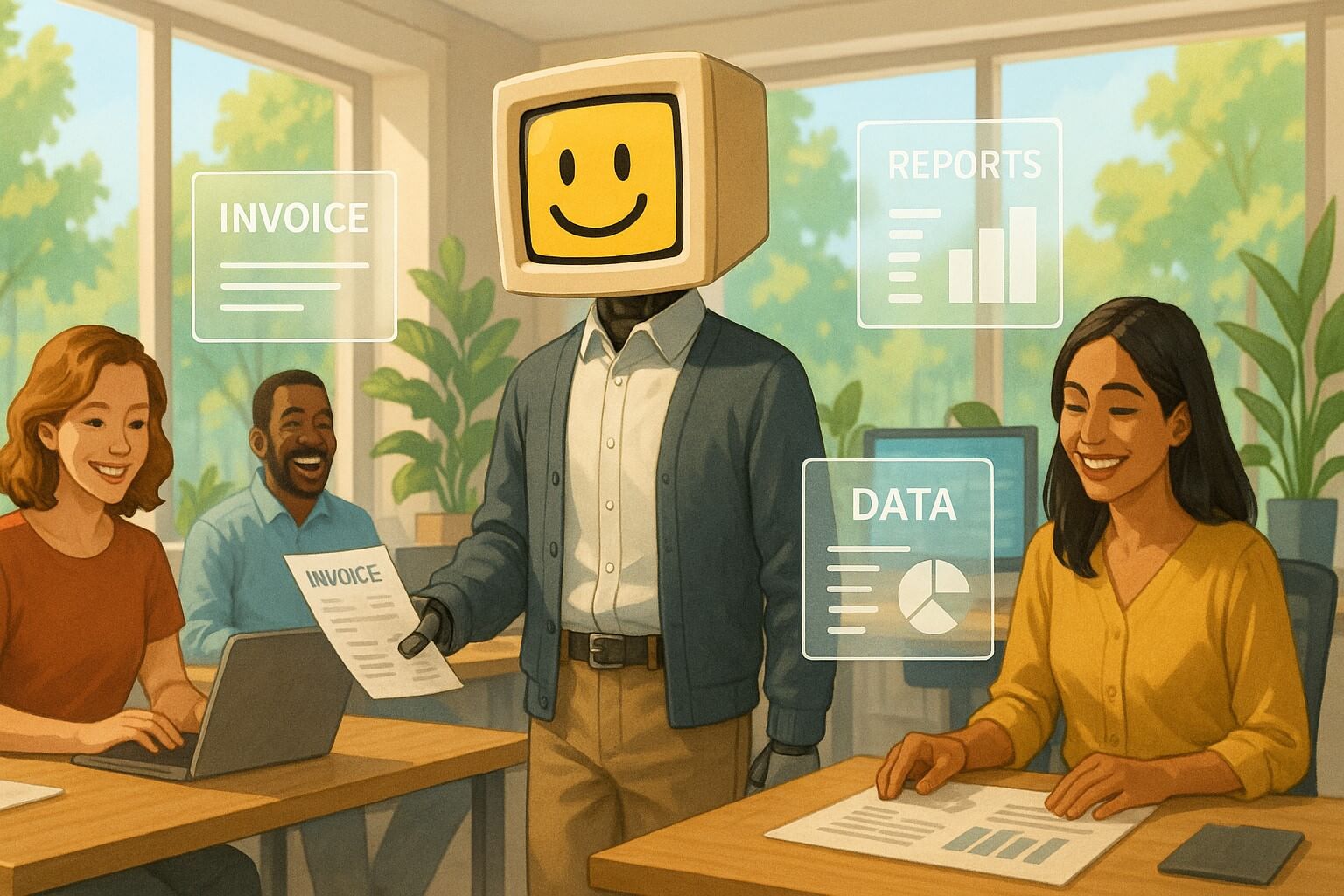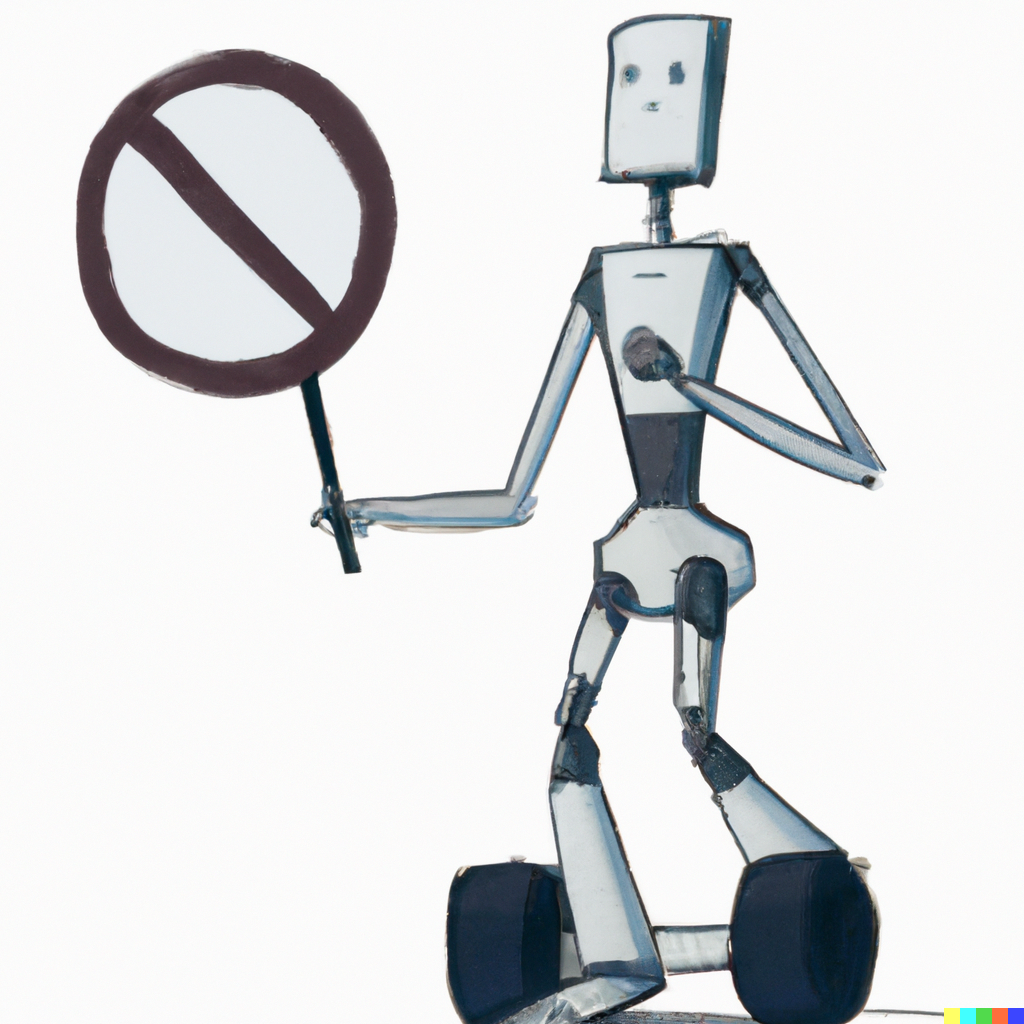Top 5 business automation trends of 2023
Robotic Process Automation (RPA): Simplifying and automating repetitive, digital tasks so you can focus on more important thingsArtificial Intelligence (AI): Acting as smart, thinking, and learning tools for a variety of business needs. A digital brain that can think for you.Cloud computing: Enables business automation to be extremely effective and available.Low-code platforms: Enabling all employees to develop their own software and move towards rapid, company-wide innovation.Process mining: Analyzing real business data to discover process improvements.Enhanced remote work: Facilitating more efficient and collaborative remote working environments.

In today’s fast-paced world, automation has evolved from a buzzword to a critical operational strategy. Imagine a workplace where software systems, rather than employees, handle repetitive routine tasks like email sorting, document filing, meeting scheduling, or invoice processing.
This is now a reality, thanks to advancements in business automation.
In this blog post, I will discuss the following topics and how they can help you achieve more:
- Robotic Process Automation (RPA): Simplifying and automating repetitive, digital tasks so you can focus on more important things
- Artificial Intelligence (AI): Acting as smart, thinking, and learning tools for a variety of business needs. A digital brain that can think for you.
- Cloud computing: Enables business automation to be extremely effective and available.
- Low-code platforms: Enabling all employees to develop their own software and move towards rapid, company-wide innovation.
- Process mining: Analyzing real business data to discover process improvements.
- Enhanced remote work: Facilitating more efficient and collaborative remote working environments.
From Robotic Process Automation (RPA) to AI-driven customer service, automation is enhancing efficiency, accuracy, and customer engagement across various industries. It’s like having a team of tireless digital assistants, each specialized in different tasks, working around the clock to keep things running smoothly.
The impact of these technologies is huge. They’re not just making businesses run faster; they’re making them smarter, more efficient, and often more customer-focused.
For instance, a small online store can now offer customer service 24/7 through chatbots, something that was previously cost-prohibitive. Or think about cloud computing – it’s like having a massive, super-secure filing cabinet in the sky, where companies can store and access their data from anywhere, at any time. This flexibility has been a game-changer, especially with the recent surge in remote work.
Business automation today is all about using technology to do things better, faster, and smarter. From RPA handling the mundane tasks to AI providing intelligent insights, these advancements are reshaping the way businesses operate and compete in the modern world.
By the way, I would really appreciate if you would sign up to our mailing list to get our exclusive content about business automation and AI delivered straight to your mailbox.
RPA: Simplifying and automating repetitive, digital tasks so you can focus on more important things
Robotic Process Automation, a kind of digital Swiss Army knife, is revolutionizing offices by automating mundane tasks within many of their departments. You can think of Robotic Process Automation, or RPA for short, as a really helpful office robot, but in software form.
Imagine you have a bunch of repetitive, kind of boring tasks that you do every day – like entering data into spreadsheets, sorting emails, or processing invoices. Now, imagine you have this super smart software buddy that can take all those tasks off your hands. That’s RPA!
RPA is like having a digital assistant who’s really good at following rules, doesn’t get tired or need coffee breaks, can work 24/7, and doesn’t make mistakes.
So while the RPA office robot is busy handling routine work, you and your team can focus on the more interesting and creative parts of your job.
In a nutshell, RPA helps businesses and organizations become more efficient, less error-prone, and frees up people to do the work that really matters. Cool, right?
As for a couple of examples of RPA, banks use RPA to process loan applications more efficiently, enhancing speed and reducing errors. In healthcare, hospitals use RPA for patient scheduling, document filing, and billing, giving medical staff more time with patients.
There are a number of RPA platform providers, including UiPath, Microsoft Power Automate, Automation Anywhere, WorkFusion, Blue Prism.
AI: A digital brain that can think for you
Artificial Intelligence (AI) is changing the way businesses work. Think of AI as a “digital brain”, or a smart system that can spot patterns, make predictions, and even make decisions all by itself. It’s like a smart helper that can learn and get better over time.

A common use of AI is in handling lots of paperwork. For example, big companies that deal with heaps of documents and invoices every day can use AI to sort and organize everything.
AI can quickly sort through documents and PDF’s and pick out important bits of information like vendor names and payment dates, and then file everything correctly. This makes things like paying bills faster and less likely to have mistakes.
In manufacturing, AI predicts when machines need fixing, which saves time and money.
In healthcare, AI helps doctors diagnose diseases faster and more accurately by reading medical images like X-rays.
In short, AI is making businesses and organizations smarter, more efficient, and better at what they do.
To learn more about AI and RPA, you can watch this video I made about it.
Cloud computing: Enables business automation to be extremely effective and available
Cloud computing has emerged as the foundation of business automation, offering scalable and secure solutions. It allows businesses, especially those embracing remote work, to store and access data from anywhere, enhancing flexibility and supporting a wide range of automated processes.
Businesses are using cloud-based tools for everything from automated billing systems to customer relationship management (CRM) platforms. These tools can automatically update and sync data across departments, ensuring everyone has the latest information without manual intervention.

For example, when a sales team updates a client’s information in the CRM, the finance team immediately sees it in their systems, making the entire process smoother and more efficient.
Without cloud computing, it would be a lot harder for all of these technologies to connect up and create major value for businesses.
Low-code platforms: Enabling all employees to develop their own software and move towards rapid, company wide innovation
Low-code platforms are revolutionizing the business automation landscape by turning everyone into a potential app developer, no coding wizardry required. Imagine a world where your marketing manager can build a customer feedback tool or your HR team can create an onboarding app, all without writing a single line of code.
That’s the magic of low-code platforms – they’re making automation accessible to all, not just the IT department.

Low-code has the potential of turning every employee into an innovator and problem solver. This shift is fostering a new culture of efficiency and creativity in businesses, big and small, across various industries.
Process mining: Analyzing real business data to discover process improvements
You can think of process mining as a high-tech way to boost your business’s efficiency and make customers happier by discovering bottlenecks in business processes.
Process mining is kind of like being a data detective for your company. You dive into all the data your business generates to figure out exactly what’s going on with your processes. No more guessing!

Let’s say you’re a big electric utility company wanting to up your customer service game. With process mining, you can look closely at detailed logs of customer interactions to spot any slow spots or problems, like issues with how you handle service requests. Then you can discover patterns and get real insights from your data, and you can make changes to your business processes to make them smoother and make things better for your team.
In short, process mining helps you make smart, data-driven decisions to improve how things work in your company. It saves time, cuts costs, and makes both customers and employees happier. It’s all about working smarter, not harder!
Remote work: Enhanced by business automation technologies
Remote work, now a key part of many businesses, is being significantly enhanced by automation technologies like Robotic Process Automation (RPA) and Artificial Intelligence (AI).

Remote workers can be even more effective by simplifying the tools and tasks that they have to carry out on a daily basis, and enable more structured ways of working with their remote teams by bringing together many different apps like CRM and email, automating data collection and reporting, and reducing time spent on repetitive tasks. This automation allows remote workers to focus on more strategic activities.
Overall, RPA and AI are making remote work more productive and collaborative, overcoming traditional barriers and opening up new ways for teams to work together effectively.
Conclusion
So, there you have it – a whirlwind tour of the top 5 business automation trends of 2023.
Let’s wrap this up by highlighting how these trends signify a major shift towards smarter, more interconnected, and efficient business operations.
By embracing these technologies, businesses are not just streamlining their processes; they’re also raising the bar for innovation and customer satisfaction.
Thinking of what the future brings, we can expect these automation technologies to keep evolving, continually bringing new possibilities and challenges in the digital world. It’s an exciting time to enhance your operations and adapt to the ever-changing business automation landscape.
Thanks for joining me on this exploration of business automation. Don’t forget to like, share, and subscribe for more insights into the dynamic world of business technology. Stay tuned for what’s next in this rapidly evolving field!
Oscar
Join DigitalStaff’s mailing list to get our exclusive content about business automation and AI delivered straight to your mailbox.



